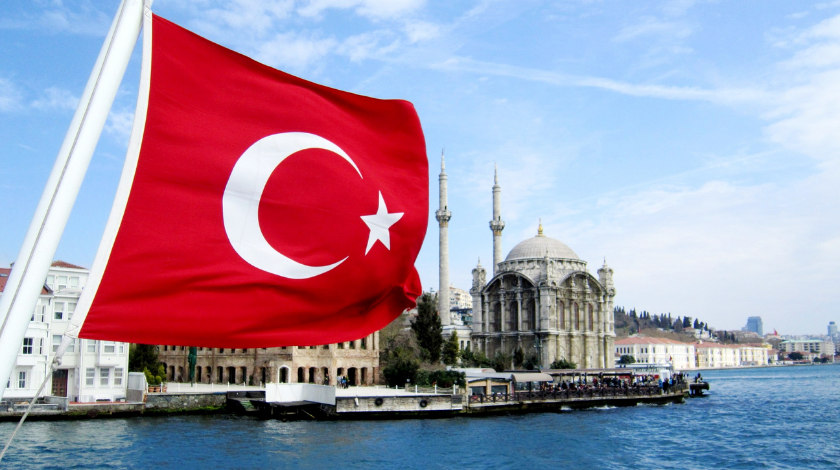Turaska Exploring Historical and Cultural Legacy of Central Asia and India
Introduction: The Significance of Turaska
Turaska is a term rooted in ancient Indian literature, commonly used to refer to Turkic or Central Asian peoples. The word appears in Sanskrit texts such as the Kathāsaritsāgara and other classical chronicles, reflecting the historical interactions between the Indian subcontinent and Central Asia. Understanding Turaska provides a window into the political, military, and cultural dynamics of ancient India, illustrating how foreign influences shaped local societies, governance, and traditions. Beyond its literal reference to Central Asian peoples, Turaska symbolizes the broader narrative of cross-cultural encounters, trade, and exchange that has defined South Asia’s historical trajectory.
Etymology and Linguistic Roots
The term “Turaska” is derived from Sanskritized forms of the word “Turk,” which itself refers to the Central Asian Turkic peoples. In ancient Indian literature, terms such as “Turushka” or “Turaska” were applied to these groups, acknowledging their geographic origins and distinct cultural identities. These Sanskritized terms served not only as ethnic identifiers but also as descriptors of foreign customs, military strategies, and socio-political structures observed by Indian chroniclers. Linguistically, Turaska represents the adaptation of foreign ethnonyms into Sanskrit, which allowed Indian writers and scholars to incorporate knowledge of distant regions into local narratives.
Historical Context and References
Turaska in the Kathāsaritsāgara
The Kathāsaritsāgara, a monumental 11th-century Sanskrit epic, mentions Turaska as a kingdom or group of people engaged in military conflicts with Indian rulers. For instance, King Udayana of Vatsa is described as having conquered the Turaska cavalry in his campaigns for regional dominance. These accounts highlight not only the military significance of Turaska but also the broader geopolitical landscape of ancient India, where regional powers engaged with external groups to secure trade routes, territory, and influence. The text portrays Turaska as a formidable force, emphasizing the strategic challenges faced by Indian rulers in defending their domains.
Turaska in the Kāvyamīmāṃsā
The Kāvyamīmāṃsā, a 10th-century Sanskrit work by Rājaśekhara, also references Turaska, situating it as a distant region, potentially corresponding to areas in Eastern Turkistan. These mentions underscore the awareness of Indian scholars regarding foreign lands and peoples, demonstrating that Indian intellectual traditions encompassed a global perspective. Through such references, Turaska serves as an example of how ancient India documented and interpreted interactions with external cultures, blending historical observation with literary embellishment.
Military Interactions
Historically, Turaska likely refers to Turkic nomadic tribes from Central Asia who had periodic interactions with Indian states. These interactions were often martial in nature, involving incursions, mercenary services, or confrontations on the frontiers of the subcontinent. Indian texts describe the cavalry and military tactics of Turaska as highly organized and formidable, emphasizing mobility, archery skills, and coordinated attacks. The inclusion of Turaska in military narratives reflects the extent to which Indian rulers perceived and responded to external threats, integrating foreign military knowledge into their own strategies.
Cultural Exchanges
The influence of Turaska extended beyond military encounters. Cultural exchanges between Central Asian Turaska groups and Indian societies included trade, art, and religious interactions. Turaska traders and migrants introduced textiles, ceramics, and metallurgical techniques, contributing to the economic and technological enrichment of India. Additionally, certain elements of Turaska culture, including decorative motifs and architectural styles, were absorbed into local artistic traditions, illustrating the dynamic interplay between indigenous and foreign influences.
Trade and Commerce
Turaska played a role in facilitating trade along the Silk Road and other transcontinental routes. Indian merchants interacted with Central Asian traders, exchanging goods such as spices, textiles, and precious metals. These commercial relationships not only enriched local economies but also fostered cross-cultural understanding, laying the groundwork for the exchange of ideas, philosophies, and religious practices between India and Central Asia.
Artistic Influence
Artistic representations in Indian temples and palaces from the medieval period reveal subtle Central Asian influences, which may be attributed to the presence of Turaska people. These include intricate geometric designs, depictions of foreign attire, and stylized motifs resembling Central Asian patterns. Such integrations reflect the permeability of cultural boundaries and the Indian propensity to absorb and adapt external elements into indigenous artistic expressions.
Religious and Philosophical Impact
While primarily known for military and economic interactions, Turaska may have indirectly influenced religious and philosophical currents in India. The movement of peoples often facilitated the exchange of spiritual ideas and practices. For example, Turkic and Central Asian interactions with India contributed to the later introduction of certain religious concepts and cosmologies, which were synthesized with existing Indian frameworks, enriching the spiritual landscape.
Geopolitical Relevance
Turaska’s role in ancient Indian literature underscores its geopolitical significance. By referring to distant regions and formidable foreign groups, Indian texts highlighted the need for strategic awareness and adaptive governance. The inclusion of Turaska in epic narratives served not only as a historical record but also as a didactic tool, teaching rulers and subjects about the importance of preparedness, diplomacy, and cultural engagement.
Frontier Management
The presence of Turaska at India’s northern and northwestern frontiers necessitated the development of defensive infrastructures, including fortifications, garrisons, and alliances. Indian rulers integrated knowledge of Turaska tactics into their own military planning, demonstrating a pragmatic approach to cross-cultural encounters. Such strategies ensured the stability of Indian kingdoms while facilitating peaceful exchanges in commerce and diplomacy.
Diplomatic Interactions
In addition to martial encounters, Turaska interactions occasionally involved diplomatic engagement. Treaties, marital alliances, and trade agreements allowed Indian rulers to manage relationships with these external groups. These interactions illustrate the nuanced understanding ancient India had of international relations, emphasizing both conflict management and cooperative diplomacy.
Literary Significance
The repeated mentions of Turaska in Sanskrit literature reflect the term’s literary and symbolic significance. In epic narratives and poetic works, Turaska often serves as a metaphor for foreignness, challenge, or distant lands. This literary use reinforced cultural awareness and provided audiences with a sense of the broader world beyond the Indian subcontinent. Turaska thus embodies both historical reality and imaginative representation, blending fact and fiction to communicate lessons in leadership, strategy, and cultural engagement.
Legacy of Turaska
The legacy of Turaska is evident in India’s historical consciousness, where references to Central Asian peoples illuminate the long-standing connections between India and its northern neighbors. These interactions shaped political strategies, cultural practices, and economic systems, contributing to the rich tapestry of India’s historical development. Today, studying Turaska helps historians and scholars understand the complexities of cross-cultural exchanges, highlighting the importance of foreign interactions in shaping India’s medieval history.
Modern Interpretations
Modern scholarship interprets Turaska as representative of broader Central Asian influences in India, including Turkic migrations, trade networks, and military contributions. Researchers analyze Turaska references to trace patterns of cultural diffusion, economic exchange, and geopolitical strategy. By contextualizing Turaska within both historical and literary frameworks, scholars gain a nuanced perspective on India’s engagement with external peoples and regions.
Conclusion
Turaska is more than a historical term; it symbolizes the complex interactions between ancient India and Central Asia. Through military engagements, cultural exchanges, trade, and literature, Turaska illustrates the dynamic relationship between the Indian subcontinent and external peoples. Its presence in classical texts highlights the Indian awareness of distant lands and the incorporation of foreign knowledge into local traditions. By examining Turaska, historians and scholars gain insight into the political, cultural, and social dynamics that shaped ancient India, emphasizing the enduring relevance of cross-cultural connections in the region’s historical narrative.
Frequently Asked Questions About Turaska
Q1: What does Turaska mean?
Turaska refers to Central Asian Turkic peoples mentioned in ancient Indian texts, including the Kathāsaritsāgara and Kāvyamīmāṃsā.
Q2: Where is Turaska mentioned?
Turaska appears in Sanskrit literature, epic narratives, and historical chronicles as a representation of foreign peoples and distant lands.
Q3: What role did Turaska play in ancient India?
Turaska played multiple roles, including military engagement, trade facilitation, cultural exchange, and influencing local art and architecture.
Q4: Why is Turaska historically significant?
Turaska is significant because it illustrates India’s interactions with Central Asia, highlighting military strategy, diplomacy, and cross-cultural influence.
Q5: How does Turaska influence modern scholarship?
Modern scholars study Turaska to understand Central Asian influences on India, including migration patterns, trade routes, and cultural diffusion, providing insight into historical globalization.






